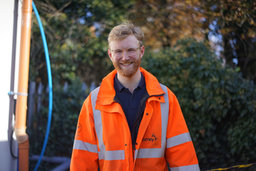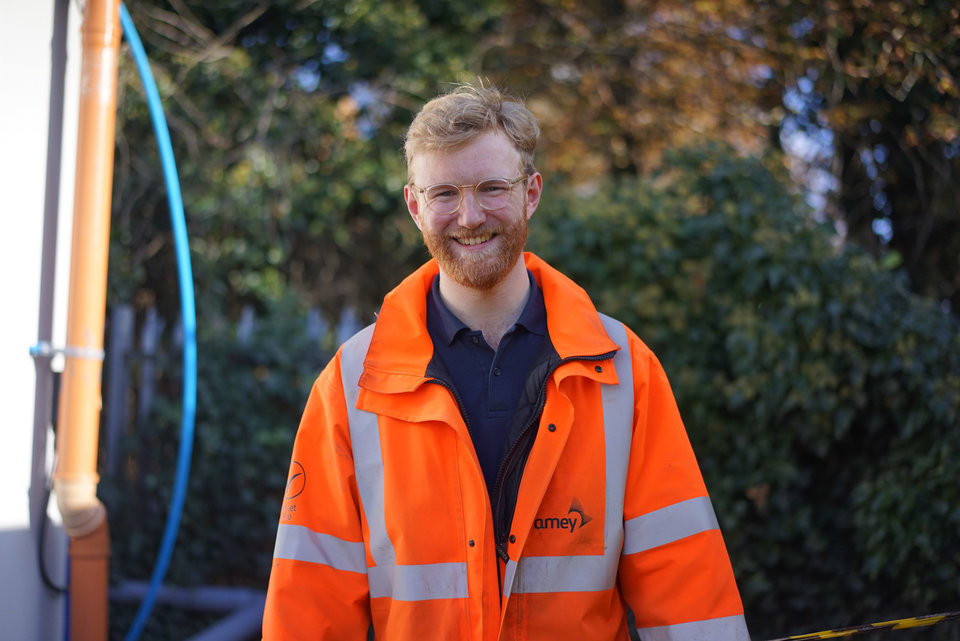All images: Max Bögl
Education
On the right track: a day in the life of a railway graduate
The railway industry is facing an ageing workforce and has been criticised for a lack of diversity. It is trying to make itself more appealing to young talent by offering apprenticeships and graduate programmes. Ilaria Grasso Macola speaks to David Roddy, who is in the final year of his graduate scheme at Amey, to find out what the life of a rail graduate entails.
The rail industry has historically struggled to attract younger and more diverse talent. In recent years things have started to change, with organisations such as Young Rail Professionals promoting the industry as an exciting workplace, inspiring the next generation of railway workers.
And to celebrate International Women in Engineering Day in 2020, HS2 called for women and young people to join the industry.
“At HS2, we’ve always been focused on addressing the issue of an ageing workforce in railway engineering and construction, a workforce traditionally dominated by men,” HS2 head of skills, employment and education Kate Myers toldGlobal Railway Review.
“We’re determined to become a global leader in the sector and export our skills in high-speed rail and engineering excellence, and hiring more women and young people is what will take us there.”
HS2 is not the only company investing in young talent. UK infrastructure company Amey has developed several initiatives, including apprenticeships with universities and a graduate scheme.
Current graduate David Roddy explains what attracted him to the programme and why young people should choose rail as a career.
James Bain. Credit: Worldline

Ilaria Grasso Macola: Can you tell us about your background?
David Roddy: I went to the University of Brighton and I did an MA in civil engineering, and I did a year with London Underground as a maintenance engineer. In the team, a lot of people were from Amey and I really liked working with them. That is how I ended up at Amey when I graduated.
The telemetry units deliver an extremely fast return on investment for the train operator

Servelec rail case study - frozen points med
Why did you choose to go into rail?
It was kind of an accident, really. In 2010 I did some work experience as part of my GCSEs, as my mum was working for Transport for London and she got me a placement with London Underground.
I just fell in love with it. I was hooked. It was just mesmerising that those construction challenges they were trying to overcome, which would in any other circumstances be relatively simple, but stick it on the railway and it becomes 10 times harder, so that's why it's so interesting.
It was also when Crossrail was kicking off, which was a very exciting time in the rail business and that was also fascinating to me.
How does Amey’s graduate programme work?
It’s a two-year programme made up of three or four six-month placements based on our own development and also where the business needs us. I have done two six-month placement and now I’m in my final one which is a year.
In my current placement, rather than being an engineer I’m actually an assistant project manager on a harmonics filtering compound project. My day-to-day is assisting the project manager in any way I can – getting together programmes, managing a small amount of the commercial aspect, getting requisitions together, monitoring our costs.
There is also a heavy site aspect to it, so I’m the on-site project manager. I deal with the day-to-day and that allows the project manager to deal with more long-term and broader picture goals for the project.
What do you like most about your job?
In the current one, apart from the challenges that it poses – no one has ever done this before and it’s a brand-new project – I really love my team. I joined this project halfway through the pandemic and that was challenging, getting to know a team when I can’t see anyone face to face.
But I feel like I have developed some really strong bonds and ties to my team, which I think will only get better once we all get out and can see each other face to face.
I love the challenge but it’s the people that make it worth it.
Talking about challenges, what are the challenges rail graduates face when entering the labour market?
From a more personal point of view, it’s learning that what you have to offer is worthwhile, which is something I had to really come to terms with. I had been hired because the company wanted me, and they saw something in me and that I had something to offer them.
Coming to terms with that imposter syndrome was challenging.
In your opinion, why is the sector struggling to attract new and diverse talent?
There’s a lot of scope for development in the railway industry and most of our management comes from what we would term in the railway industry ‘on the shovel’.
Our site supervisors, managers, planners are all people that are developed from the coalface; you wouldn’t find many people in senior positions that have done STEM A-levels or have gone to university because they have just gained that experience at work.
On a project that I worked on before, we had a team of about 15 people and there were three engineers, one of them was female and the rest were men, but they had all developed from being on the shovel.
If you want to get to the middle management of the site management, maybe we need to think about developing further down the food chain, that’s where we develop people from. So, looking into apprenticeships in signalling or track engineering, that’s where I think we should focus a little bit more.
What can the industry do to make itself more appealing?
Just try and foster a welcoming atmosphere overall. I wouldn’t say that anyone’s particularly hostile anymore. But it’s still a tough environment.
Just be as welcoming as possible and lead by example, don’t discriminate – even though I don’t think anyone coming into the industry now would ever do so. There is still work to be done but I could only say what I would do personally, which is just to treat everyone with respect and be as welcoming as possible and try and foster that sentiment within the teams.
Main image: Amey graduate scheme student David Roddy. Credit: Amey